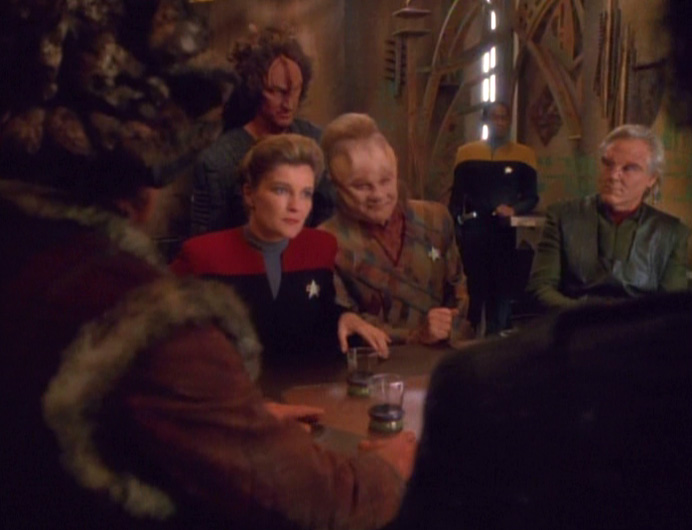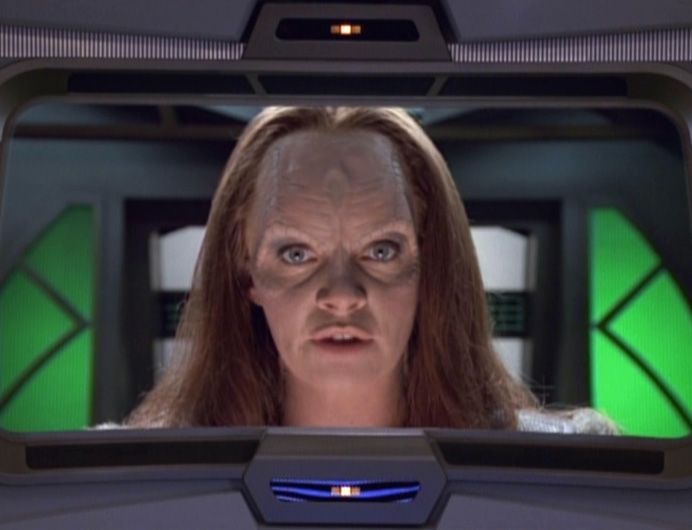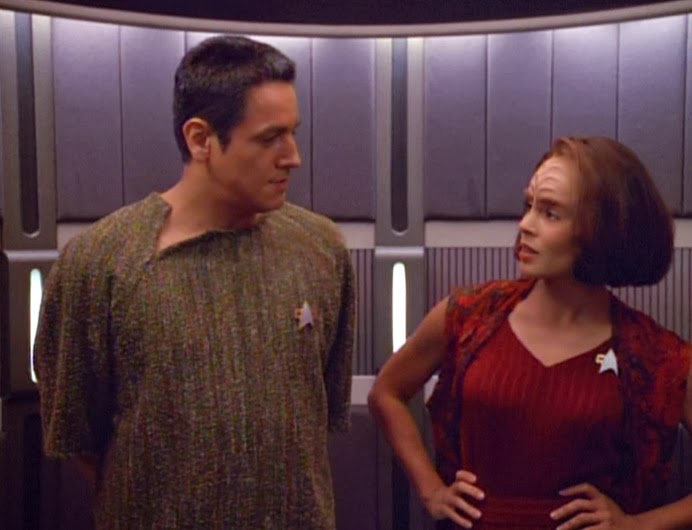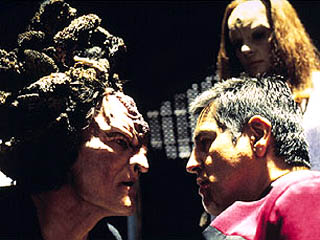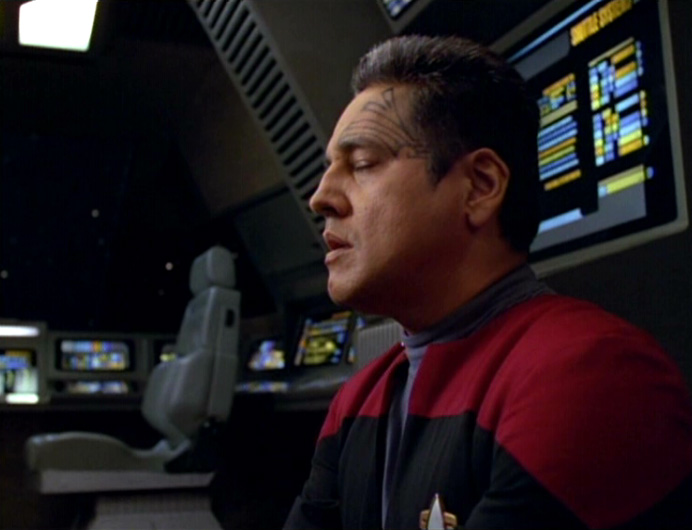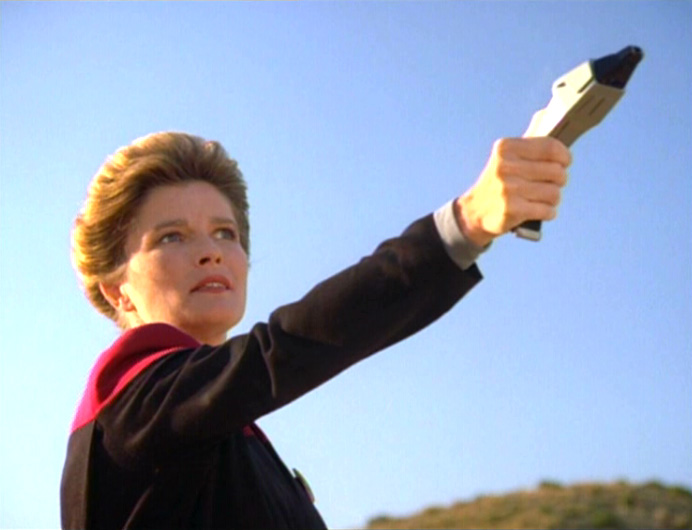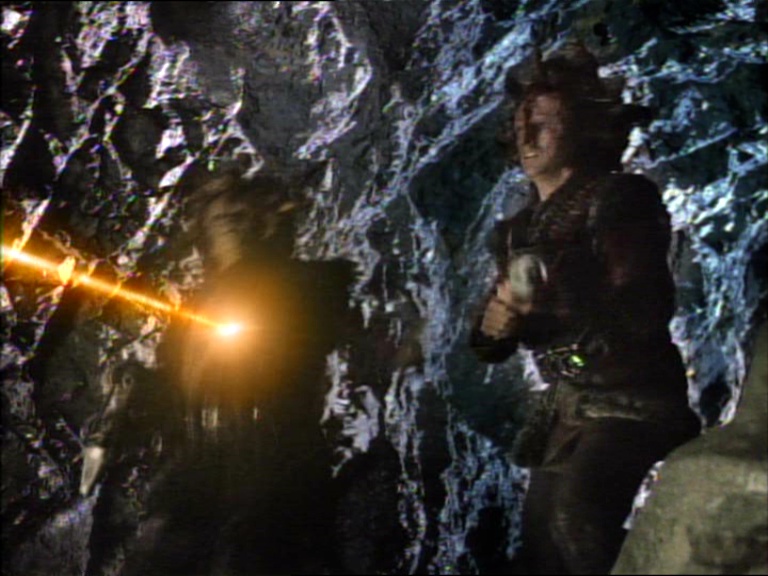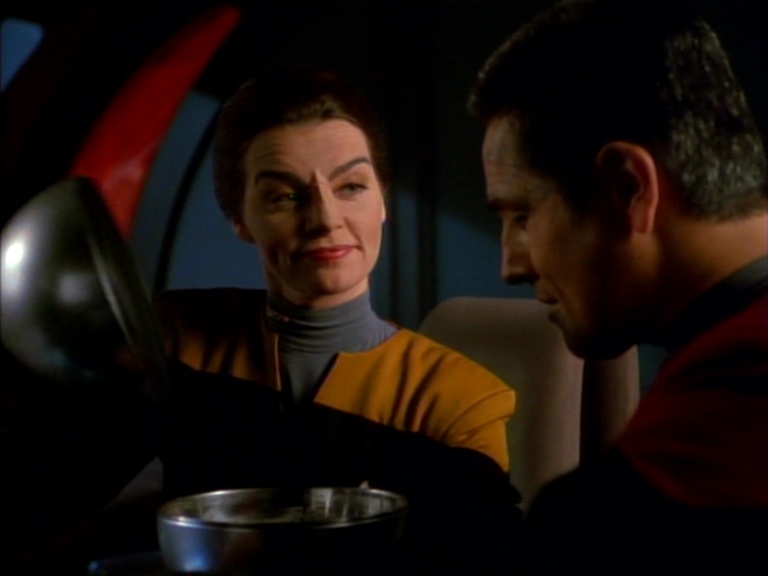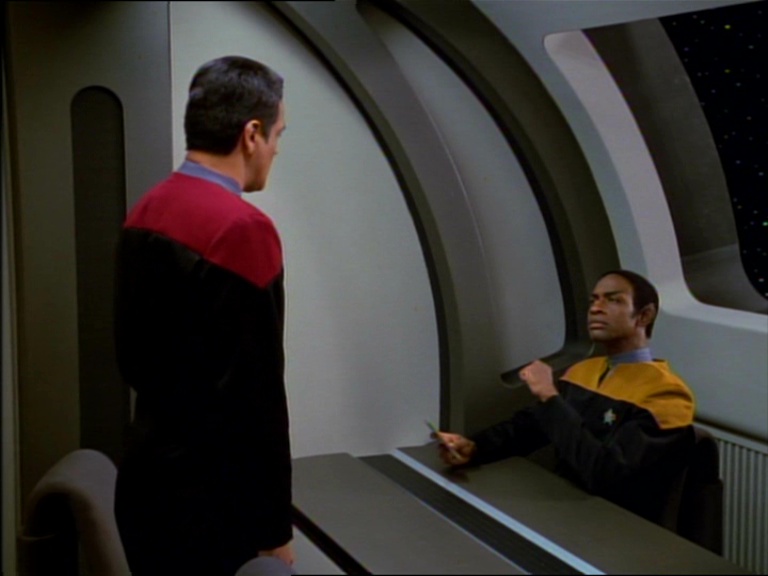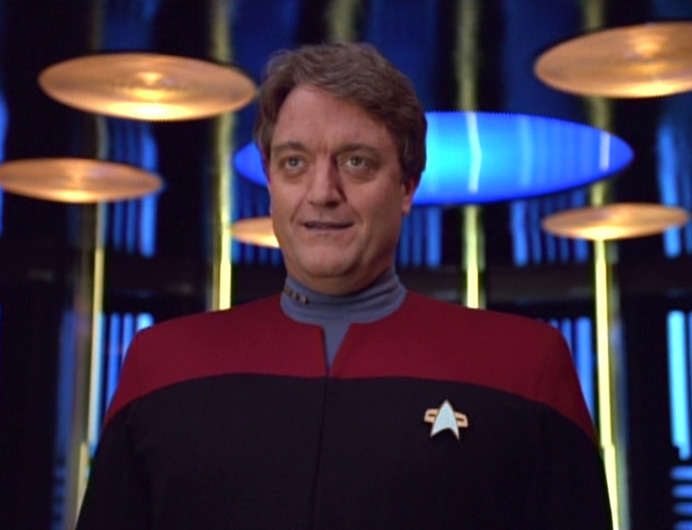
The ship accidentally frees an imprisoned Q (Gerrit Graham) and regular Q (John de Lancie) shows up to lock his counterpart back up. It’s learned that New Q wants to end his immortality, as he’s bored and he feels the Q Continuum has lost its way — but Normal Q says a Q suicide would have potentially disastrous effects. Both Qs agree to let Janeway arbitrate the matter and she hears arguments from both sides — including a rather trippy visit to the Continuum in a conceptual way Janeway and Tuvok are able to understand. Janeway eventually grants New Q asylum and Normal Q — moved by New Q’s irrepressible nature and arguments about the listless Continuum — helps him commit suicide. Normal Q leaves Voyager, but not before promising that he will no longer be a company man within the Continuum — and saying that he will likely return to darken Voyager’s doorstep.

Why it’s important
We learn more about the Q in “Death Wish” than any episode outside of “Encounter at Farpoint”. Depicting the Continuum as a crossroads in a desert town was sort of brilliant. It’s the kind of sci-fi trick that was often done in TOS, and only sometimes successfully. Used here, it works wonders. This episode might be Voyager’s best pure sci-fi showing.
Of course, the events here start a civil war within the Continuum, which we’ll see during Q’s next visit to Voyager. A civil war among what might be the most powerful entities in the universe is a huge, huge deal — at least, as a concept.
What doesn’t hold up
The episode has one conceit that deserves some discussion. Would the Continuum actually agree to abide by Janeway’s decision? I suppose you could argue that the Q’s sense of absurdity could be in play, but it seems odd that such powerful beings would put such an important decision in a “limited” life form’s hands.
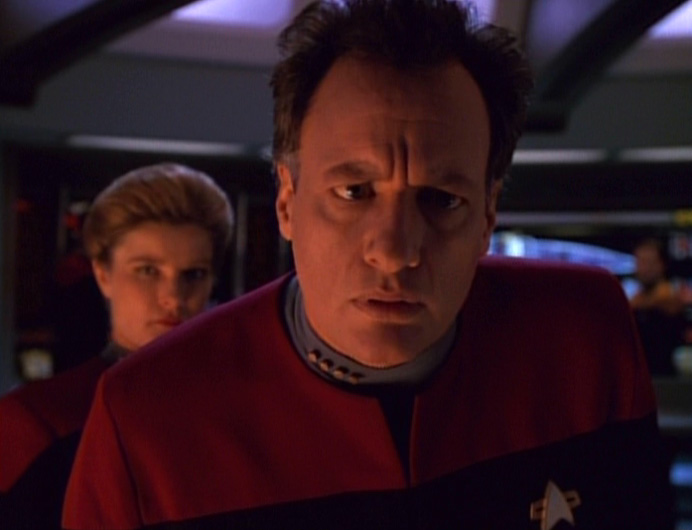
Final thoughts
This might be my favorite Voyager episode. It gives nods toward continuity (which we’ll discuss) and it also asks a fascinating question: Could an immortal, all-knowing being ever get so bored that it wants to die?
Beyond that, it’s a great callback to a lot of what was established in TNG, with a few references to the Enterprise and even a guest appearance by Jonathan Frakes as Riker during the hearing Janeway oversees. Granted, the move was probably designed to bring in TNG viewers — I remember a preview from back in the day in which Riker seems to have a big role in the episode, and he’s really on screen for about five minutes — but the effort mostly works. It’s justified by Normal Q wanting to show New Q’s impact — presumably because not having him around would have bad effects. New Q, apparently saved a relative of Riker’s during the American Civil War. If he hadn’t, our Riker wouldn’t have existed — and the Federation would have been conquered by the Borg, stated explicitly by Normal Q. If anyone thought I was overstating the lack of love Riker gets for his actions to stop the Borg, he clearly, you know, saved the Federation.
Coming later this week …
Back to the Kazon.

